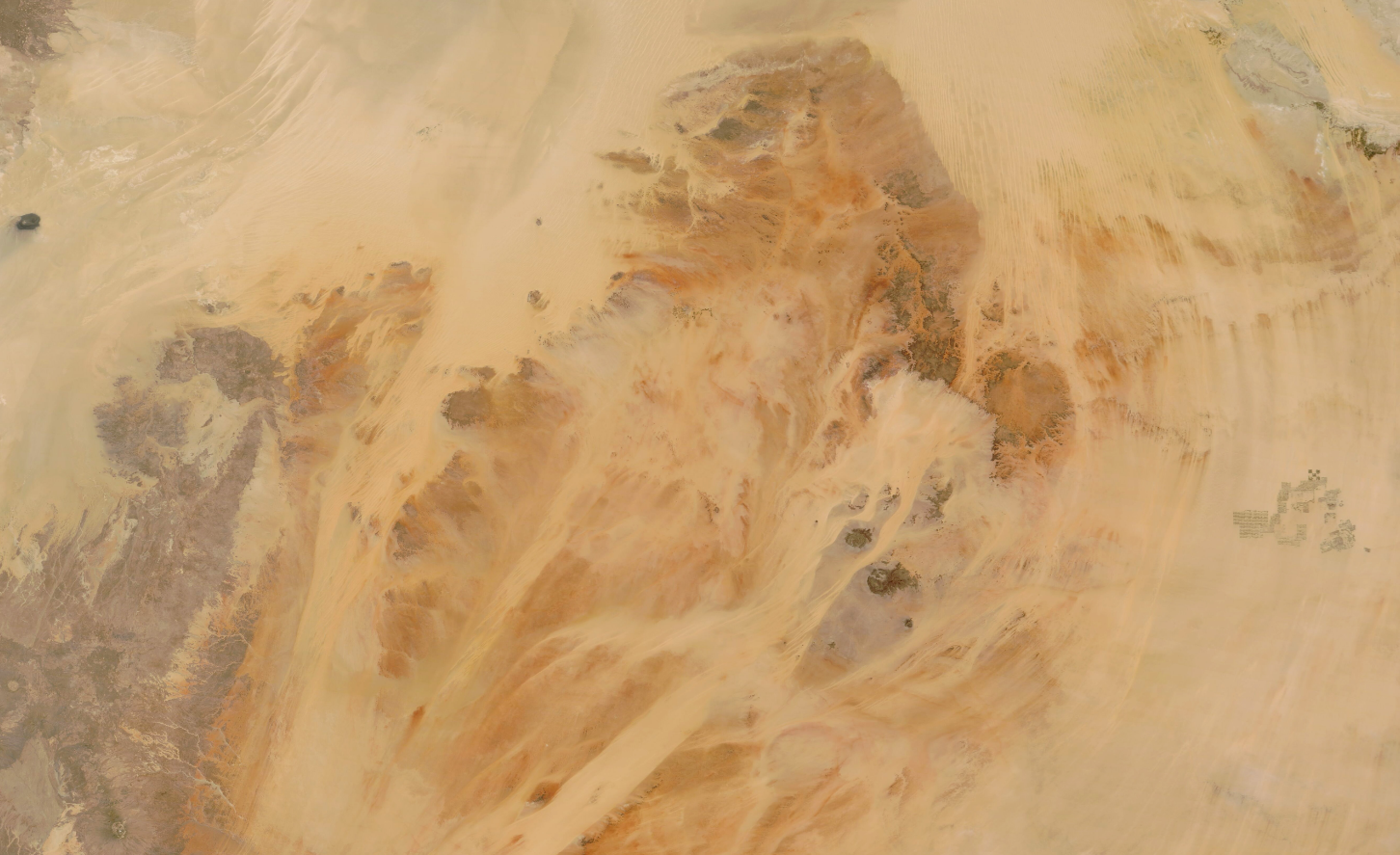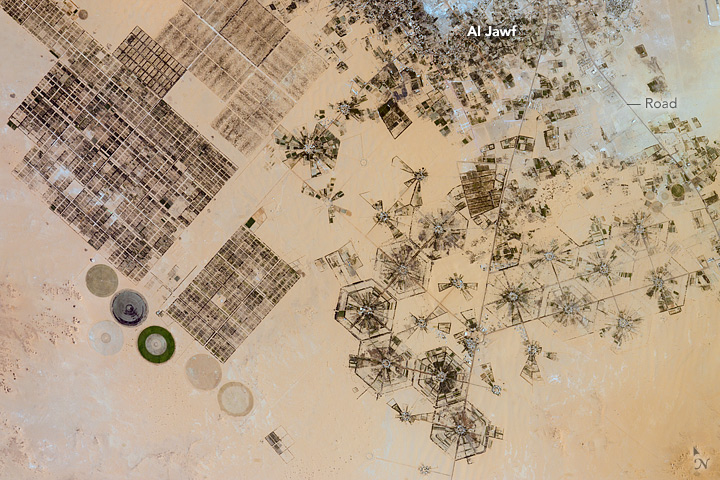At first glance, southeastern Libya looks like an unforgiving land of sand and barren mountains. However, look closer and you’ll see clues that the desert is home to a massive underground oasis.
Images taken by satellites and astronauts onboard the International Space Station (ISS) show that Libya’s Kufrah district is not as desolate as it first seems. Amid the vast swathes of golden sand, you can spot strange circles and odd patches of green.
These blots are evidence of Libya’s struggle to stay hydrated. In 1983, the Libyan leader Muammar Gaddafi initiated a colossal civil water works project called the Great Man-Made River (GMMR). Consisting of a vast network of underground pipes, it’s considered to be the world’s largest irrigation project and supplies the majority of all freshwater used in Libya.
The water comes from the world’s largest fossil water aquifer system, known as the Nubian Sandstone Aquifer System. It was left behind some 10,000 years ago when this region was a surprisingly lush landscape of rivers, lakes, and rain.

Libya’s Kufrah District was imaged on May 26, 2022. Look very closely to the right of the image and you may see some green.
Image credit: MODIS/NASA
The aquifer is around 2 million square kilometers (772,204 square miles) in size and lies beneath north-western Sudan, northeastern Chad, southeastern Libya, and much of Egypt. It’s an invaluable resource for these countries, which constantly battle with arid conditions.
While much of the system is underground, imagery from low-Earth orbit shows signs of its presence. As explained by ESA, satellite imagery shows large circles embedded in the Al Kufrah Oasis, each of which has a diameter of nearly 1 kilometer (0.6 miles). Described as “Libya’s Circles of Life”, the circles are the product of numerous sprinklers that use water from the fossil aquifer to irrigate the land, allowing crops to grow.
The fruits of this labor are also visible from the skies. As per NASA Earth Observatory, more recent photographs taken from the ISS show that a patch of green can be seen among the extensive sands of the Kufrah district.

The town of Al Jawf is like an oasis in the desert, literally.
Image credit: ISS/NASA NASA Earth Observatory
This is Al Jawf, a town that owes much of its existence to the ancient aquifer that it sits on top of. Zoom into the photograph and you’ll see this small but significant settlement is covered in farms, all of which are irrigated by water from the Nubian Sandstone Aquifer System.
Libya, however, still has problems with its water supply. Water scarcity has been one of the greatest challenges facing Libya in recent history and it ranks as the most water-stressed country in North Africa. Now, it has to address these problems against the backdrop of corruption, conflict, and climate change.
Source Link: Libya’s "Circles Of Life" Show Hints Of A Giant Ancient Aquifer Beneath The Sand